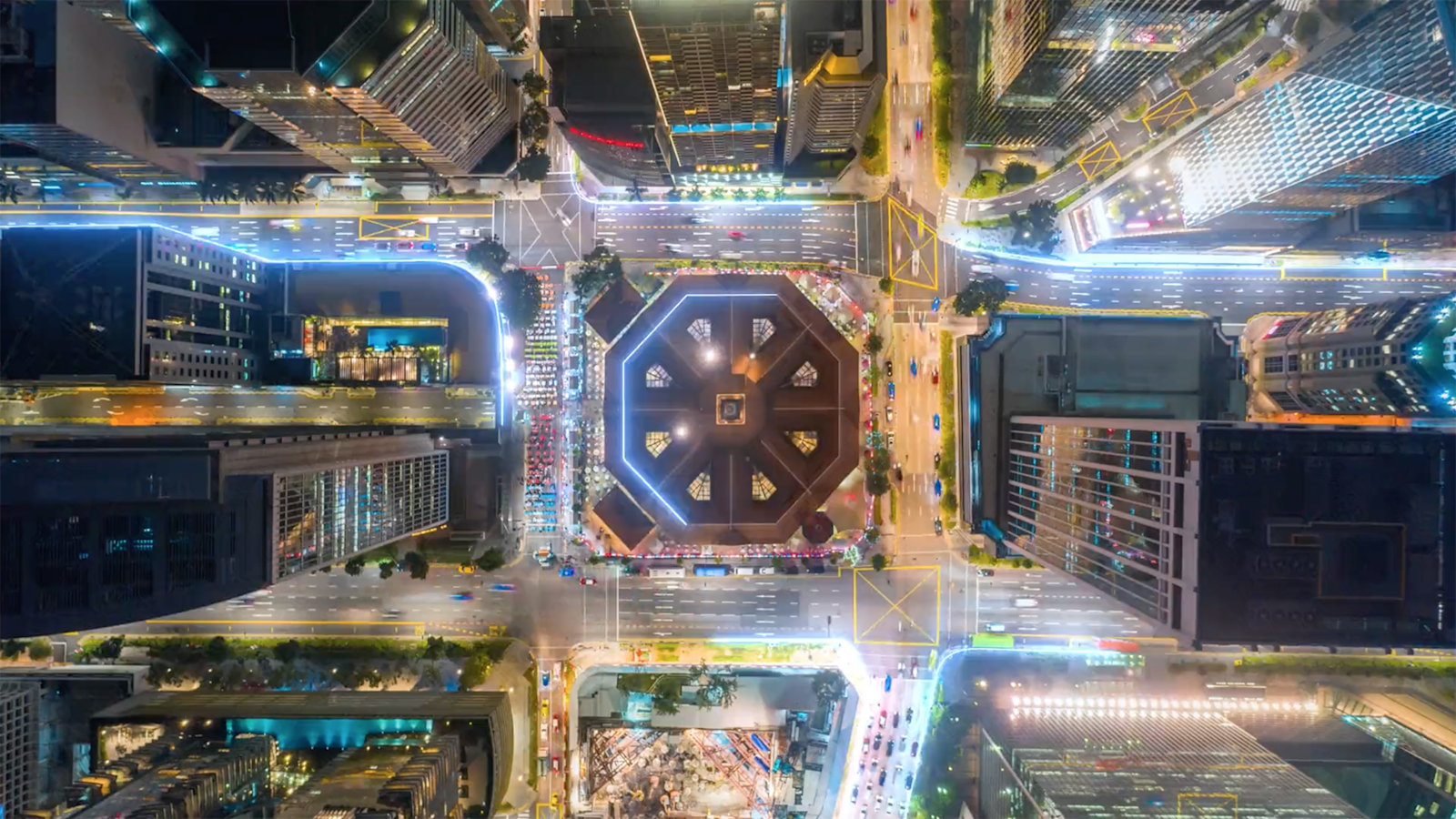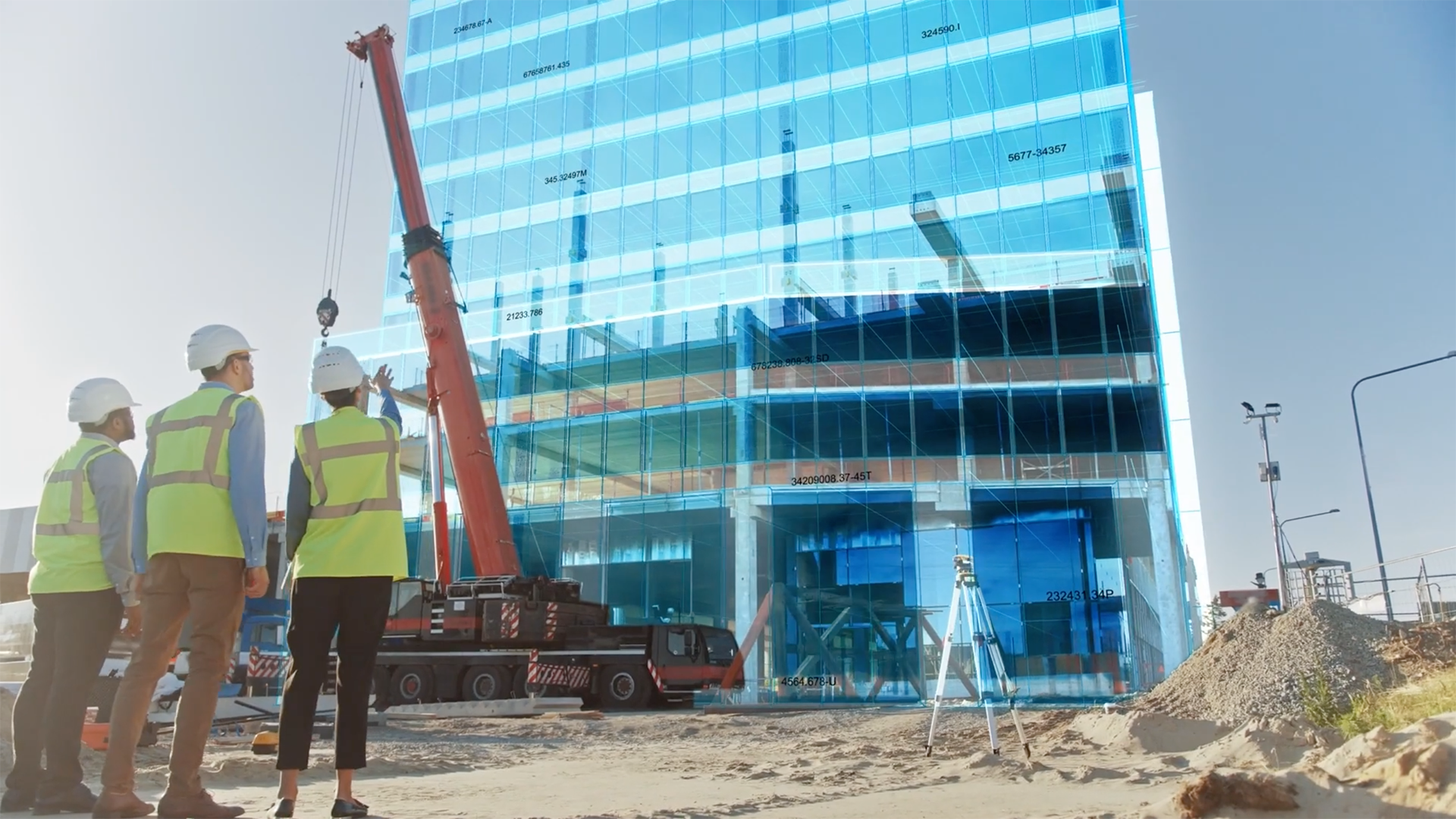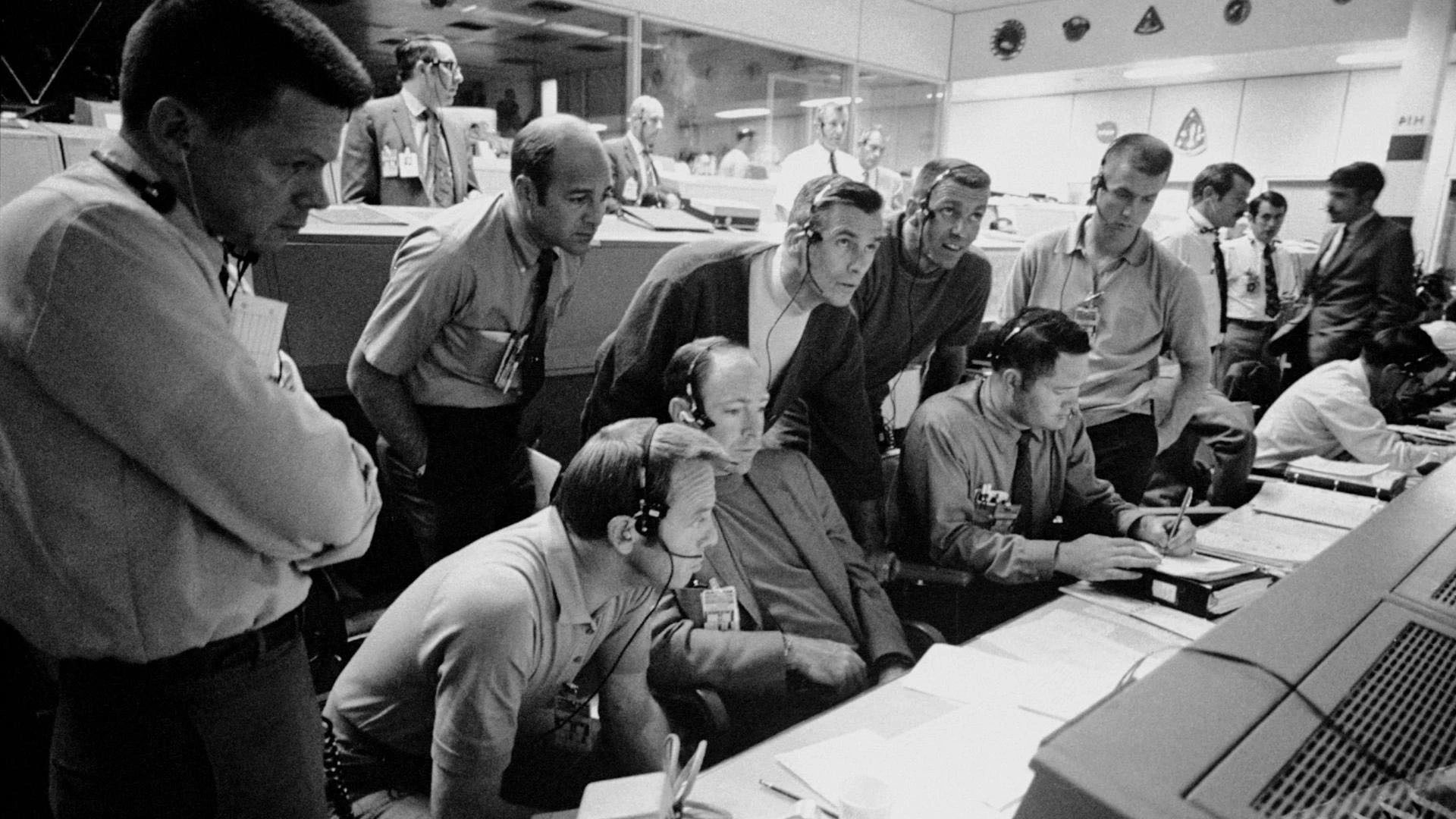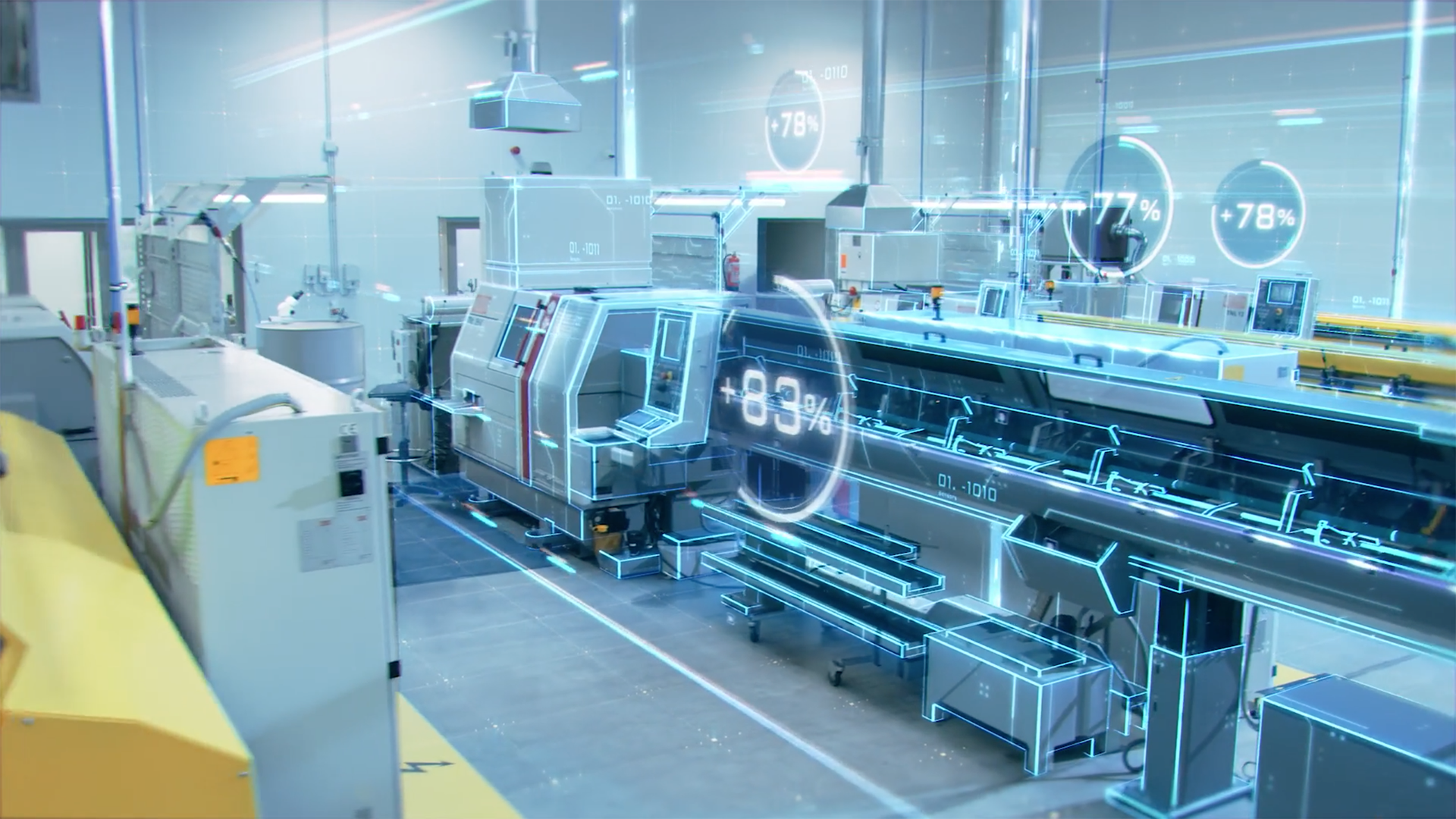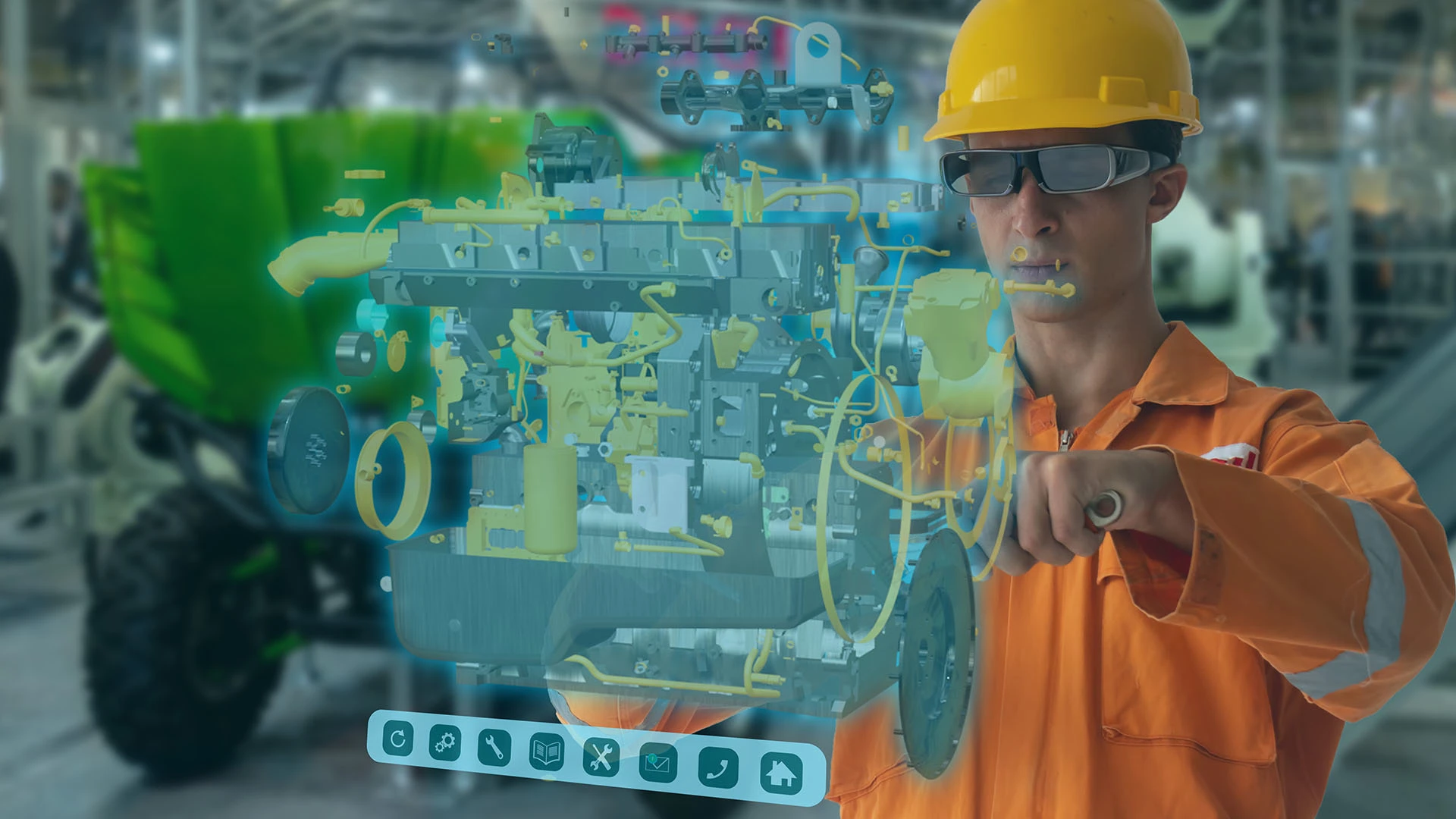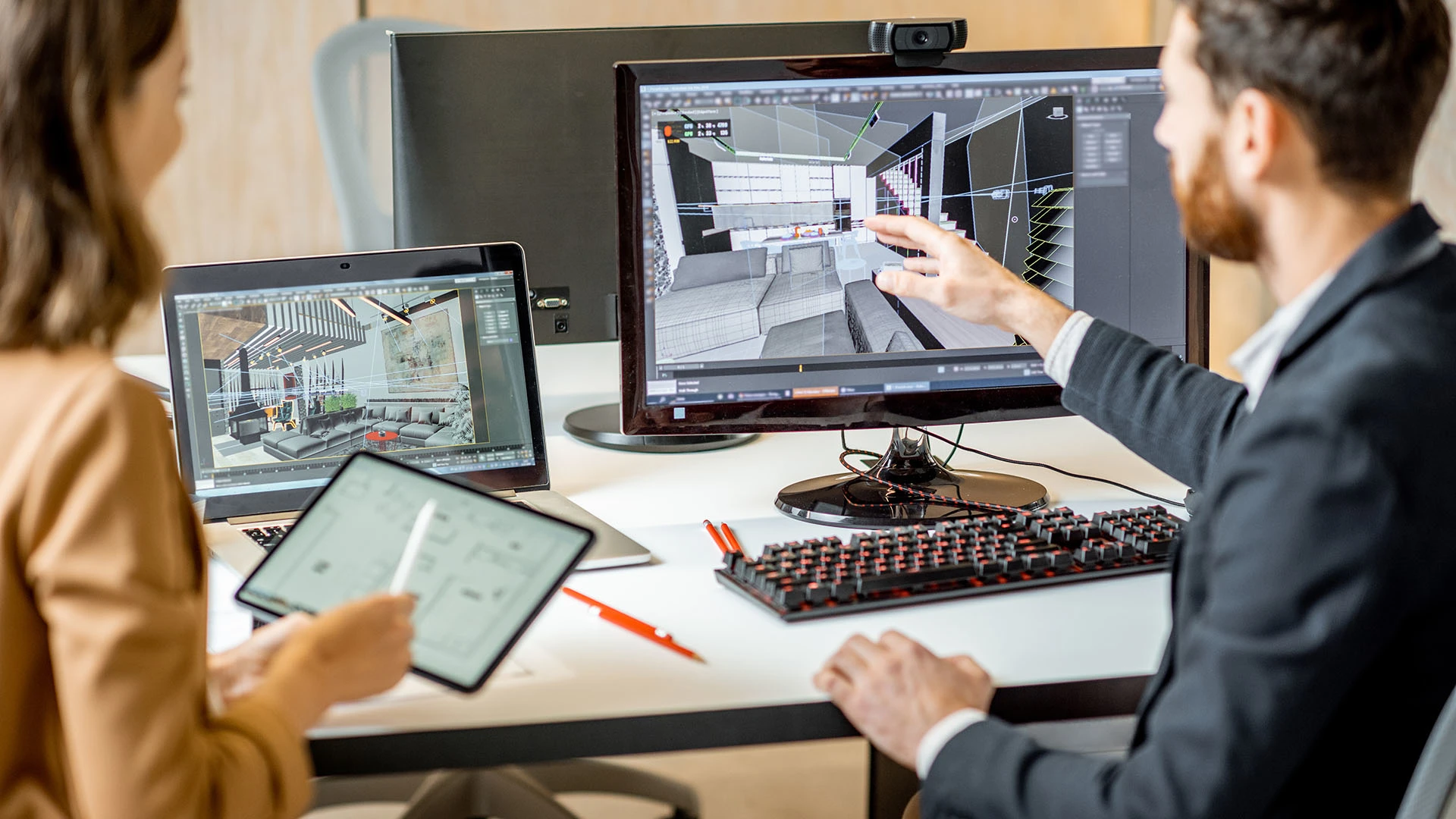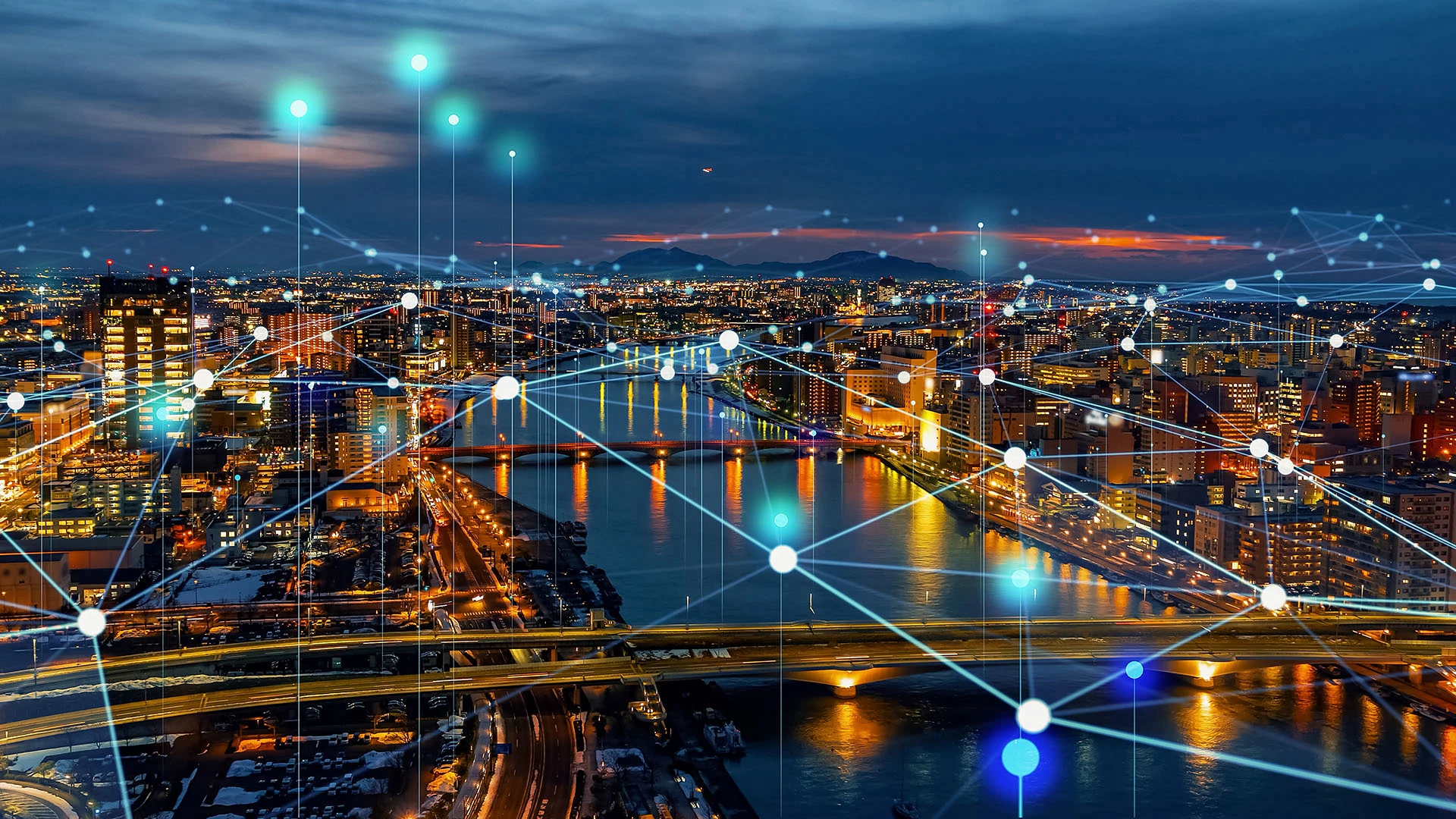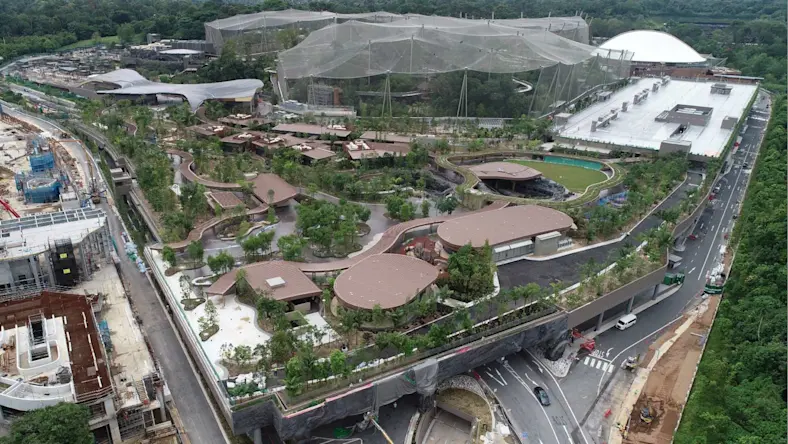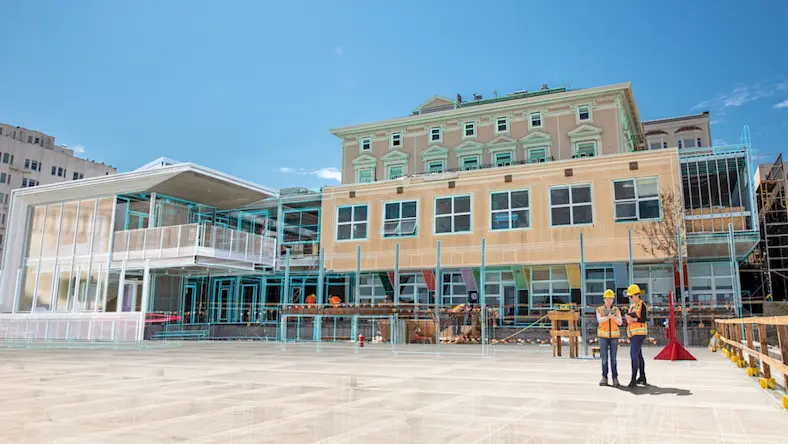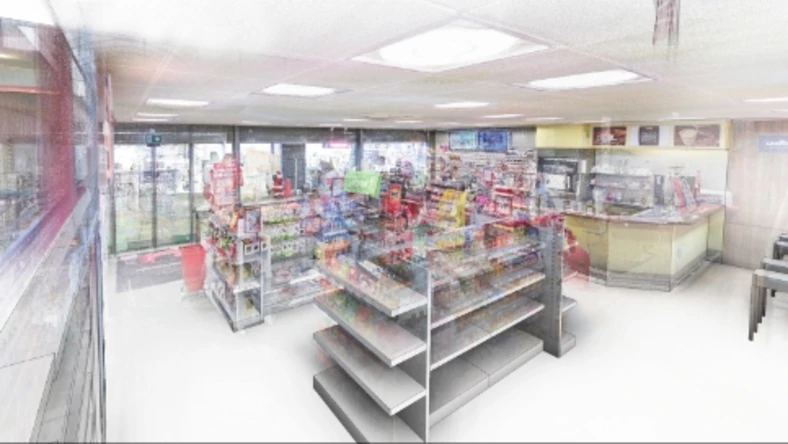& Construction

Integrated BIM tools, including Revit, AutoCAD, and Civil 3D
& Manufacturing

Professional CAD/CAM tools built on Inventor and AutoCAD
Twenty years ago, when Stephen Spielberg began adapting Philip K. Dick’s Minority Report for the big screen, he assembled the biggest thinkers in science and technology to help him envision the cities of the future. The movie version of Washington, DC, in 2025 was dark, to be sure, but its residents also enjoyed the conveniences brought by intelligent digital technologies such as driverless cars, retina-scanning personalized advertisements, and voice-controlled homes.
Two decades ago, those technologies seemed impossibly futuristic, but many are common today: gesture-controlled computers, targeted web ads, and refrigerators that will order milk when you run out.
Today, smart buildings know where you live, what your schedule is, and even how much sugar you like in your coffee. As buildings and cities become smarter and more autonomous, the tools used to design, manage, and maintain them are, too.
It’s no secret that the architecture, engineering, construction, and operations (AECO) sector is lagging behind other industries when it comes to embracing digitalization and data-driven decision making. But that’s changing, as industry professionals realize that to move forward, they need to start thinking—and working—differently.
The data produced in AECO industries is robust and mature, and the engineers and technical staff have the expertise and inputs to build digital twins right now. More intelligent deliverables are there for the taking at project handover. It’s the management level that needs to step up and change the paradigm, educating customers about the benefits and making digital twins the new normal.
As the Internet of Things (IoT), artificial intelligence (AI), and cloud-computing technologies drive AECO’s digital transformation, digital twins are gaining traction. The tools are becoming more powerful, and designers and owners are starting to understand how they can optimize the built world.
A digital twin is a digital representation of a physical asset or environment, such as a car, a bridge, or a building. Think of it less as a traditional static 3D model and more as an always-changing information model. It’s a common data reference that’s created during a project-planning stage and spans every phase of an asset’s lifecycle, from design to manufacturing and construction to operation and maintenance—even to its future use or reuse.
Unlike static data models, digital twins are dynamic, “living” entities that evolve in real time. They continuously record, learn, update, and communicate with their physical counterparts by exchanging data throughout the asset’s lifecycle using artificial intelligence (AI), machine learning, and Internet of Things (IoT) technologies. Armed with these dynamic simulations, users of these virtual twins can head off problems before they happen, explore new opportunities, and plan for the future.
Digital twins in architecture, engineering, construction, and operations (AECO) are comprehensive replicas of built assets and their systems.
A digital twin asset could take the form of:
A building
An infrastructure element, such as a bridge
A complex ecosystem of connected assets, such as a rail network, an office park, or a city
In the construction industry, digital twins process information such as:
Operational data for HVAC and mechanical, electrical, and plumbing (MEP) systems
Parts and maintenance data
Environmental data collected through IoT sensors
In design and construction for AECO, the digital twin can be a multifaceted and extremely cost-effective way to iterate and test new ideas before you even turn soil. Change any number of variables from a facade design to a number of levels and your wiring diagram, HVAC needs, or even the impact on the local environment can change automatically as the design changes.
In later phases, when your project is complete and in use, the digital twin is still an invaluable asset. The way workspaces use light or power, the way people interact with the built environment, and any number of other measures can be taken, digitized, and automatically ingested into your digital twin to reveal efficiencies and performance enhancements in the building or asset in use.
In a new build, a digital twin is created at the outset of a project, as AEC teams and owners work together to define performance goals and desired outcomes. As the project proceeds, data is continually collected and mapped to the model, using a platform such as Autodesk Tandem. When the asset is handed over to the owner, the virtual twin collects operational data that can be used to fine-tune performance and manage maintenance over the long term, as well as support decommission and future use.
Because the digital twin is always evolving with the data supplied by its physical twin, it can perform simulations and predictions in response to real-time conditions. In the construction industry, a digital twin makes iterating changes faster and much more cost-effective during the architecture phase. One example might be to align a building’s solar facade to follow the path of the sun or modify indoor airflow to minimize the spread of pathogens.
Configuring retail spaces to take advantage of shopper patterns
Maintain productivity and occupant comfort in office spaces
Increase sustainability measures by optimizing energy usage and other building inputs
Automating indoor farm operations for optimal growing conditions
Predicting maintenance problems in oil refineries
Designing health-care spaces for efficient patient flow and staffing needs
From a workflow standpoint, digital twins unlock data that’s traditionally been trapped in silos (or in paper files). As a result, teams are better connected throughout the entire lifecycle of a project, from design to decommission. And by integrating static data such as component specifications and maintenance schedules with dynamic data such as occupancy rates and environmental conditions, digital twins empower everyone from designers to owners to make more informed decisions that maximize the performance and lifecycle of the asset.
Building information modeling (BIM) is driving the digitalization of the construction industry, using multidisciplinary models and cloud collaboration to inform the design and management of built assets and the systems inside them.
Digital twins realize the full potential of BIM, connecting data and processes with dynamic, real-time, bi-directional information management. Digital twins can be created without BIM, but bringing them to their full potential starts with the integrated workflows and information sharing that already power the BIM process—starting with BIM is a much more efficient way to get there.
In the future, most digital twins will be integrated into the BIM process to give everyone better insights in a standardized environment. The value of these insights extends beyond any single project; captured data can be fed back into the planning and design phases of new projects, applying data learning to continually improve them.
Digital twins aren’t limited to single instances. By integrating multiple digital twins, designers can build a connected ecosystem and optimize that system’s performance over time.
When you think beyond the individual asset, you can start to consider its broader potential in economic, social, and environmental terms. Imagine building a smart city that can be managed using real-time data, analyzing and optimizing energy consumption, wireless networks, public transport, security systems, and infrastructure performance—in real time through geodata modeling and IoT sensors. Smart cities can even adapt to changing climate conditions and run simulations for responses to emergencies such as pandemics and natural disasters.
Because digital twins can collect and interpret data about things like population growth, natural resources, and climate conditions, they can help build more resilient cities and empower industries to better respond to global challenges.
This is already happening in cities around the world. In Singapore, the Virtual Singapore project 3D digital platform lets users from different sectors create tools to solve the city’s complex challenges, from improving parks to developing evacuation routes. In India, the state of Andhra Pradesh’s new capital, Amaravati, a $6.5-billion “smart city,” is being created using a digital twin that integrates more than 1,000 data sets that manage the permitting process, monitor construction progress, and evaluate design plans for success in the city’s extreme climate.
The idea of digital twins can be traced back to the 1960s, when NASA developed “mirroring technology” to simulate systems used in space via complex physical replicas on the ground.
These simulators would prove critical during the infamous Apollo 13 mission, when engineers used 15 computer-controlled models to assess and re-create conditions onboard the crippled spacecraft 200,000 miles away, using that information to guide the crew home in one of the most epic rescue missions in American history.
The concept of digital twins in product lifecycles is widely attributed to Dr. Michael Grieves, chief scientist for advanced manufacturing at the Florida Institute of Technology, who introduced the idea at a Society of Manufacturing Engineers conference in 2002. There, Grieves proposed a lifecycle management center that contained the physical representation, the virtual representation, and the exchange of information between the two.
While digital twins’ potential was clear, the computing power, connectivity, and sheer data storage they required made them far too expensive for most industries to implement. So, for decades, the idea remained a pipe dream. In the past five years, however, AI and IoT technologies have brought the process within reach.
The global digital-twin market is expected to reach $48.2 billion by 2026.
Digital twins are well-established in manufacturing, but they’re still pretty new to the AEC industry, which is less standardized, more fragmented, and historically slow to adopt digital processes. But as the construction industry continues its digital transformation—accelerated by the remote models forced by the COVID-19 pandemic—forward-thinking firms are embracing the idea that these virtual twins will become essential to every phase of design, construction, and operations; many of these firms have already started looking for solutions.
Digital twins operate at five levels of sophistication. The simplest models integrate data from various sources; the most advanced model is capable of acting autonomously.
The descriptive twin is a live, editable version of design and construction data—a visual replica of a built asset. Users specify what kind of information they want included and what kind of data they want to extract. It becomes a single source of truth for every possible stakeholder because manuals, notes on part numbers, maintenance schedules, and countless other documentation assets can be ingested and synthesized for universal access.
This level has an added layer of operational and sensory data. The twin captures and aggregates defined data and verifies data to make sure that systems work together. This data is continuously collected in defined intervals and aggregated to build time-series performance data trending ripe for interpreted insights.
This twin can use operational data to gain insights. Think of an IoT reading showing you a vibration in a machining device, warning you that a motor bearing is worn down before you experience problems, providing lower air flow readings warning you that filters need changing, or sharing seasonal energy use metrics informing on your utility bill budget.
This twin simulates future scenarios and considers “what-if” questions.
This twin has the ability to learn and act on behalf of users.
It’s important to note that levels 1 and 2 are currently in use in AEC. While level 3 is not fully in use, sensor data thresholds can be set to monitor performance. For example, setting thresholds for motor vibrations helps monitor when bearings might be in danger soon, even though predicting the exact time of failure is not possible. Levels 4 and 5, which are enriched with real-time data from embedded sensors and IoT technologies, are on the horizon.
Digital twins aren’t limited to newly constructed assets; a digital twin can be applied to an existing building or infrastructure to gain insight into its operations and potential use.
When you apply intelligent intervention to an existing structure, you’ll improve performance, minimize uncertainty, and better manage risks. It’s easy to see how this benefits everyone in the value chain: contractors, suppliers, investors, owners, and building occupants.
Integrating a digital twin into a built structure can be challenging, especially if no digital files exist. Reality capture using laser scanning or photogrammetry can fill the gap, creating a point cloud model with a high degree of accuracy. Reality capture was recently used to create a digital twin of the Notre Dame de Paris cathedral to assist with renovations following the devastating 2019 fire.
It’s simpler to implement digital twins into some types of existing assets—such as, say, a water plant—that have more exposed systems. Whatever the asset, it’s a worthwhile investment if you want that asset to be more cost effective, more sustainable, and more resilient in the long term. Applied to broader systems, digital twins can help societies become more sustainable, agile, and responsive to evolving demands. For an inspiring example, explorethis profile of the Charles H. Wright Museum’s digital transformation.
Digital twins offer short- and long-term benefits. In the short term, benefits focus on operation, providing a single source of truth that can help reduce costs, shrink risk and uncertainties, and maximize efficiency; in the long term, digital twins extend the value of BIM through the asset’s lifecycle.
When data is buried in disconnected systems, it’s hard for owners to monitor, manage, and ultimately get the full value out of their facilities. Digital twins help owners make better business decisions right from the planning and design phase, empowering them to tap into rich data and explore scenarios that will maximize performance and extend the lifecycle of their investments.
Just one example of better business decisions is providing the best possible work environment for staff, which a digital twin can help you design.
From day one, owners and operators can begin efficient operation of assets, without struggling with confusing (or missing) maintenance documentation. The handover of analog, unclassified, and disconnected data leaves owners and operators an insurmountable challenge in terms of creating an integrated solution for monitoring, managing, and tuning their asset. The result is that owners and operators are unable to realize the benefits of smart buildings and instead end up with siloed data and systems, inaccurate information, a lack of transparency, and poor insight into their asset performance.
Examples abound of owner/operators using digital twins to smooth operations in the real world, such as that of the tail system in the city ofIstanbul.
Digital twins provide a digital thread that combines aggregate data in a simple way, doing the heavy lifting to track things like maintenance and optimize energy consumption, freeing operators to focus on their jobs.
Facility data are constantly evolving. Digital twins let managers know when changes are made and who’s making them. Managers can even predict material and labor cycles, reducing waste and enhancing safety.
It’s a no-brainer: When AECO firms can offer more services and more value, they win more projects. “Our AECO customer base sees a lot of opportunity to deliver more to their owners in terms of the data deliverable,” says Robert Bray, senior director and general manager for Autodesk Tandem. “And beyond that handover, if this is a digital asset that reflects the as-built model, it can connect to operational systems and help answer the owner’s questions.”
Nearly 80% (PDF, p. 6) of an asset’s lifetime value is realized in operations. When AECO firms can collaborate with owners up-front to set performance priorities and expectations, they bring more value in helping owners maximize their investment through greater energy savings, better maintenance, and improved quality of life for occupants.
Digital twins can make the previously multistep process of finding efficiencies, costs and expanding services run concurrently, every relevant team accessing the same model to source only the information they need to work.
As digital twins gain momentum in AECO, designers and owners can strategize longer-term about the performance of their assets and bigger-picture implications. In the future, digital twins could form the foundation of cities to be more resilient to global challenges, from the earth’s staggering (PDF, p. 1) population growth and dwindling natural resources to the next pandemic.
As digital twins increasingly incorporate AI and machine learning, they’ll evolve from conceptual tools to become more intelligent and autonomous as software capabilities expand.
The market for digital twins is growing with the adoption of IoT technologies: According to MarketsandResearch, more than95% of IoT platforms will offer digital twinning capability by 2029, and digital twinning will become standard in IoT application enablement by 2028.
Progressive cities are getting on board: The market for digital-twin-supported solutions in smart cities is projected to reach $5.9 billion by 2029. And ABI Research predicts that there will be more than 500 smart-city digital twins in operation by 2025.
Realizing the full potential of these smart, connected ecosystems is still a long way off, but forward-looking firms are finding ways to start planning for these models now. As digital transformation continues to reshape AEC, tools will be refined and best practices will emerge, helping designers and engineers break out of their silos.
The data already exists; the challenge is integrating non-standardized information from a variety of sources into common tools and finding ways to employ that data for AEC needs. Those who embrace the benefits of harnessing data today will be best positioned for success in delivering the better-built world of the future.
After growing up knowing he wanted to change the world, Drew Turney realized it was easier to write about other people changing it instead. He writes about technology, cinema, science, books, and more.
AECO
Image courtesy of Obayashi Corporation.
Executive insights
AECO
Image courtesy of BIM Facility AG.
